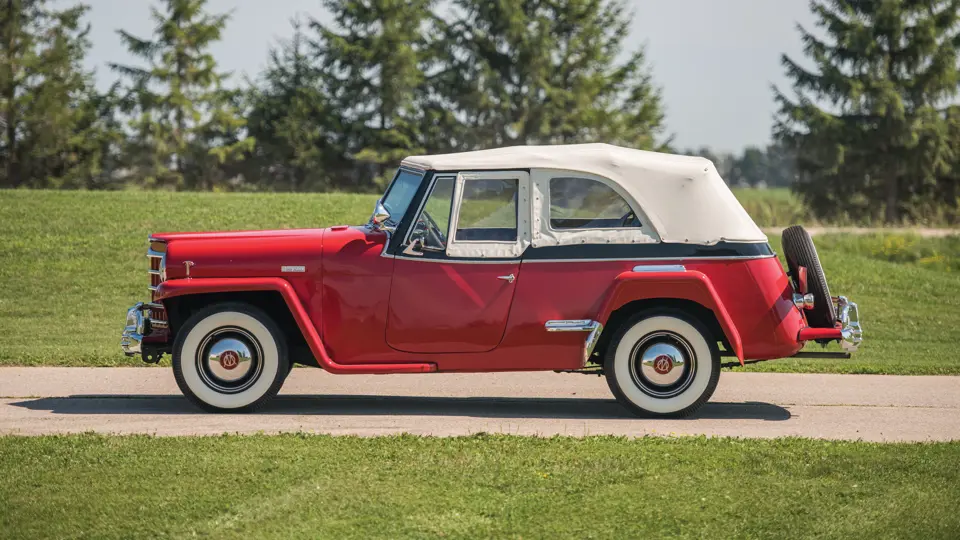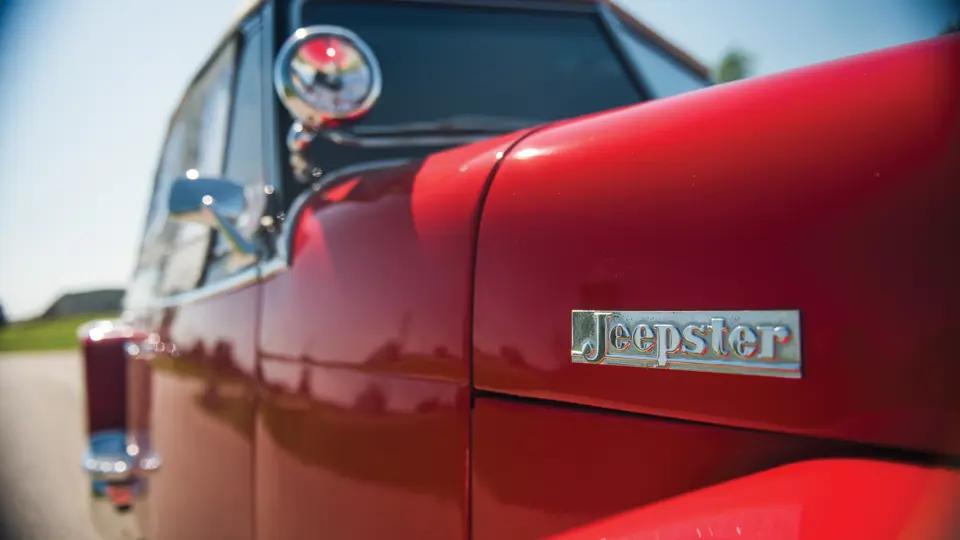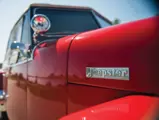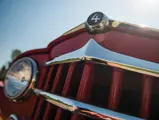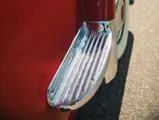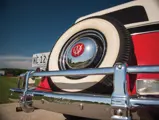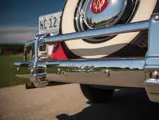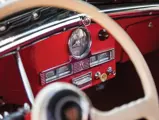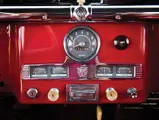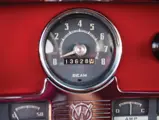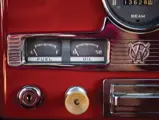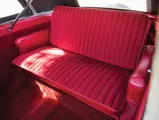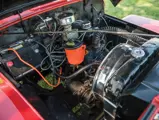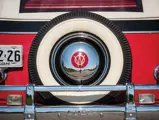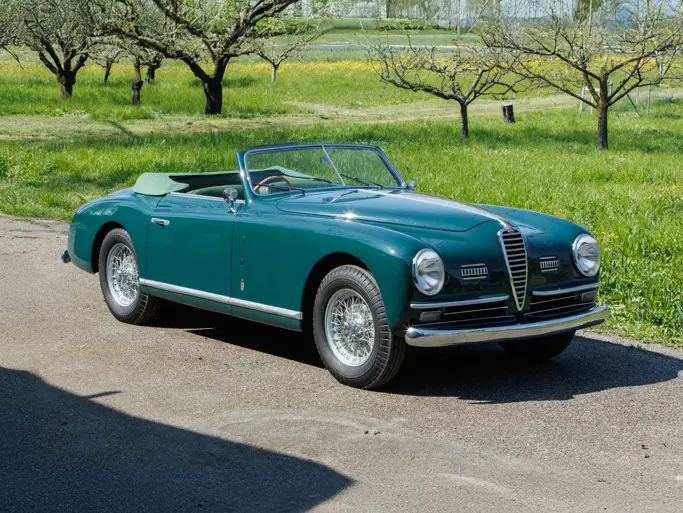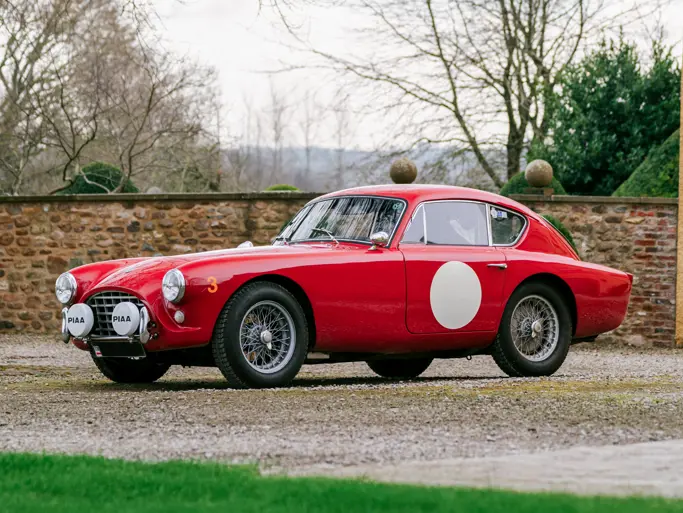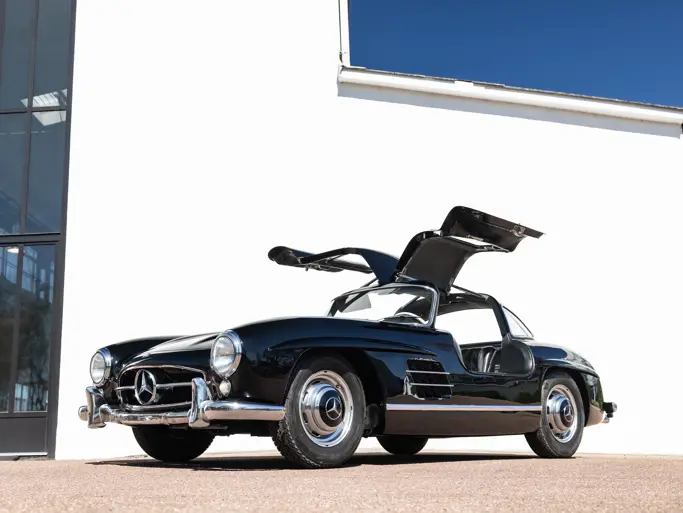63 hp, 134.2 cu. in. inline four-cylinder engine, three-speed manual transmission, front transverse leaf spring suspension, rear semi-elliptical leaf spring suspension, and four-wheel drum brakes. Wheelbase: 104 in.
After World War II, Willys decided to resume its civilian production by releasing a series of Jeep-based vehicles. This course of action set Willys apart from most other automobile manufacturers, who instead simply picked up where they had left off in 1941. The two-door Jeepster Phaeton, introduced in 1948, was designed by Brooks Stevens during the war and built using the same chassis as the Jeep station wagon. Even with an unmistakably Jeep front end, its styling was sporty, with such design cues as cut down upper edges on the doors, inspired by the roadsters coming out of the United Kingdom.
This particular Jeepster exhibits the design revisions made for the 1950 model year, including a revised grille, a new center-gauge dashboard design, and a wraparound rear bumper. Equipped with the stout four-cylinder engine, it is finished in two-tone red and black with a complementary interior in red cloth with vinyl accents. Although the car shows signs of use and minor cosmetic imperfections, it was nicely restored and can be driven and enjoyed with pride. It is well equipped with a number of accessories and features, including snap-in side curtains, a folding white fabric topic, rear-mounted spare tire, whitewall tires and dual fog lamps, as well as dual spot lamps.
Whether by the lake or simply around town on a weekend, Willys Jeepsters have become increasingly popular as summer family holiday vehicles. This example is especially well outfitted, and given the unrestored and weathered condition in which so many Jeepsters find themselves, this is a particularly enticing and remarkably rare offering.




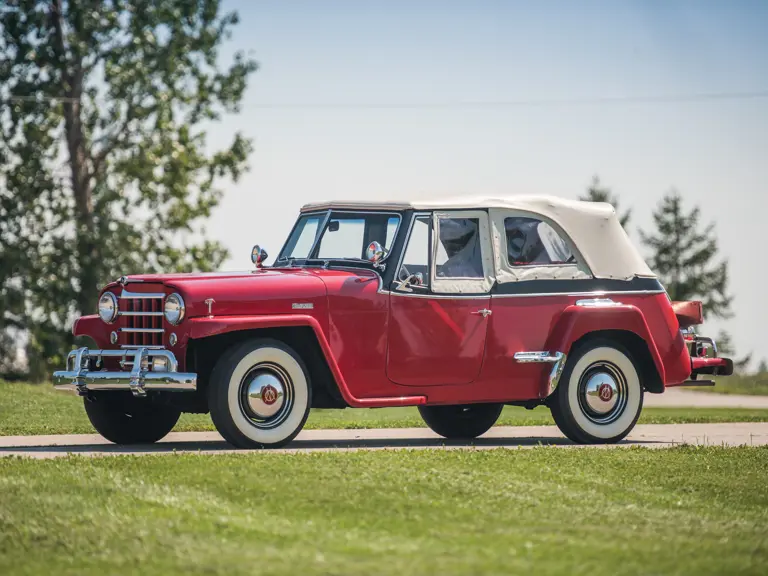
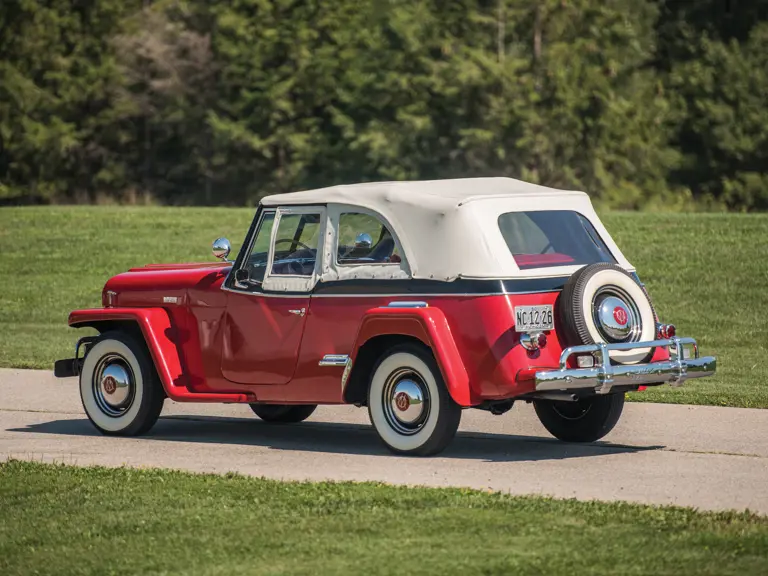
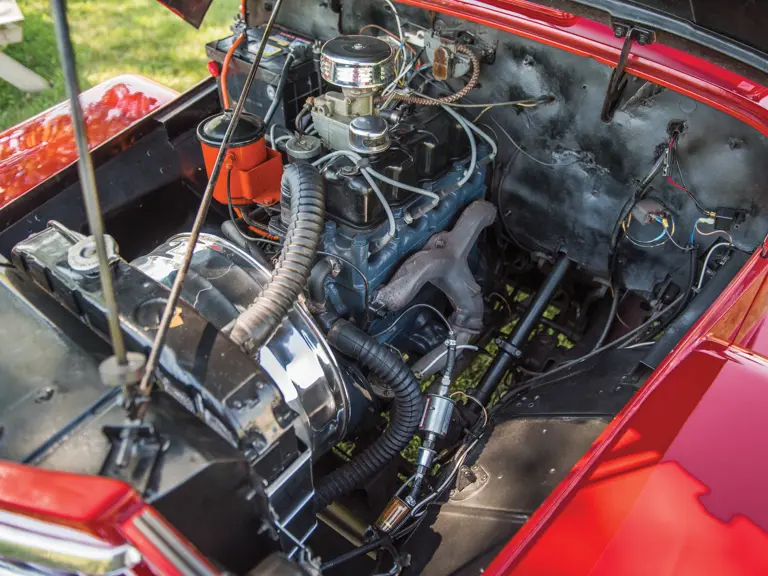


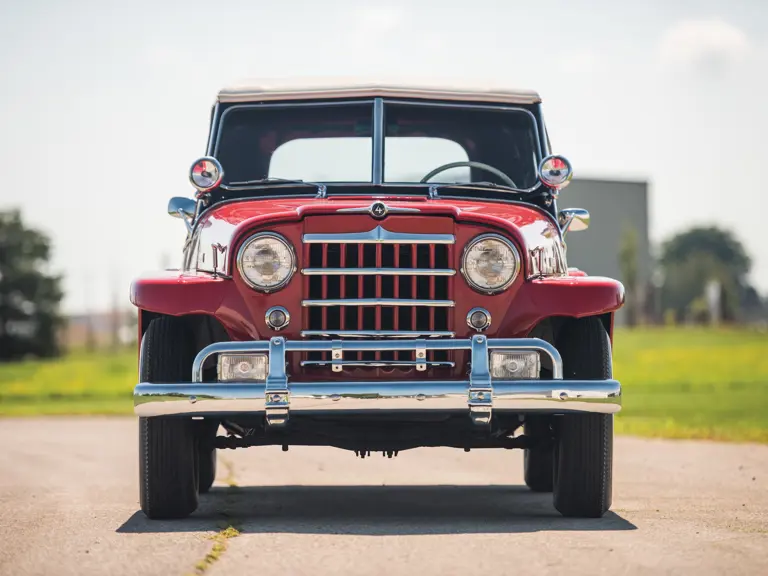


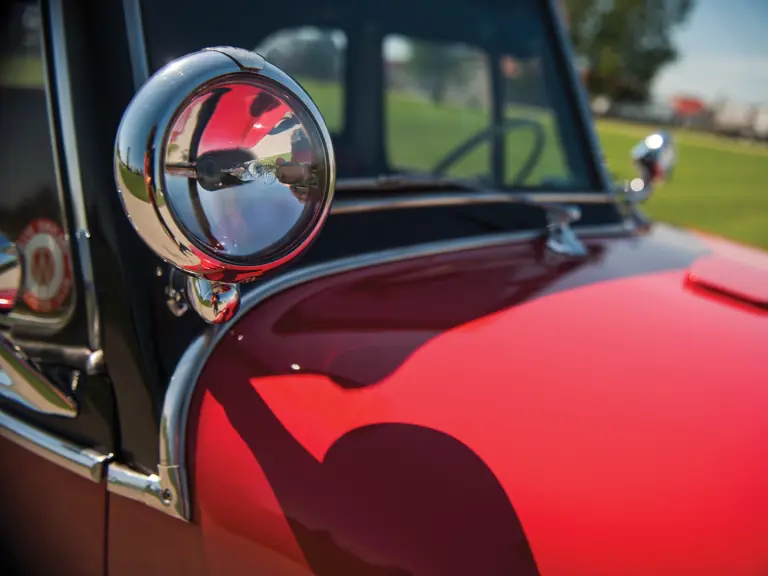


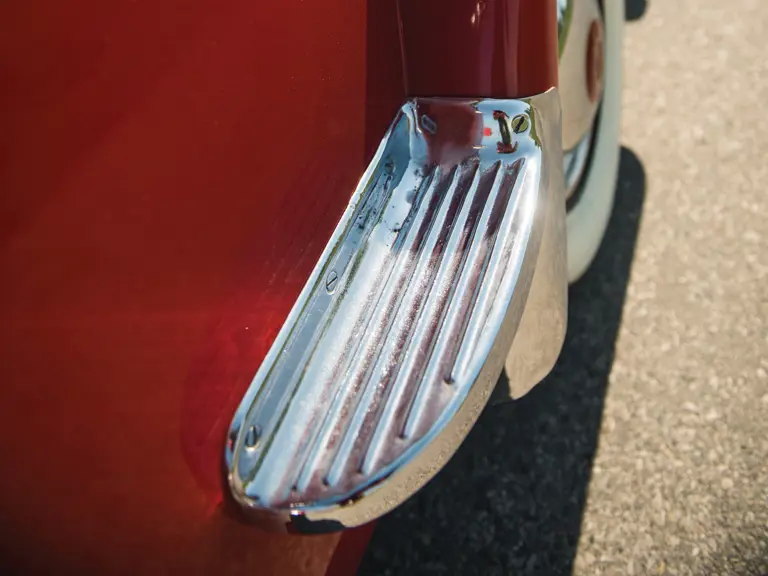
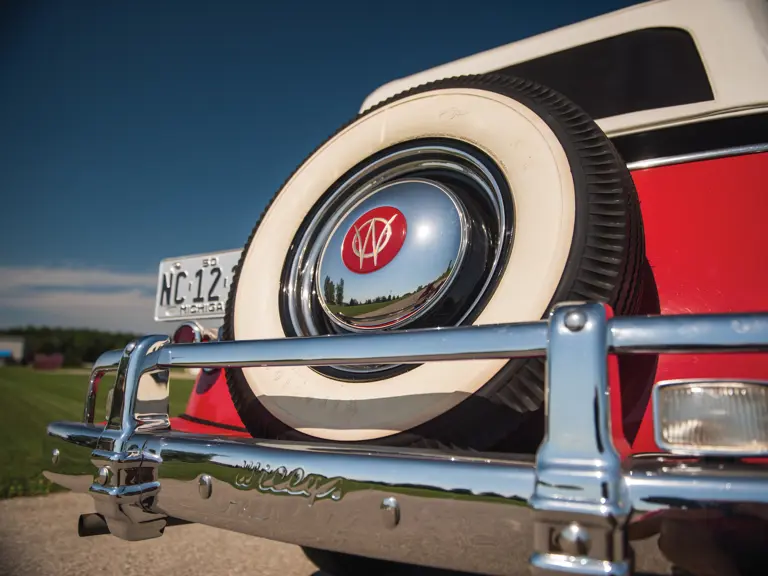
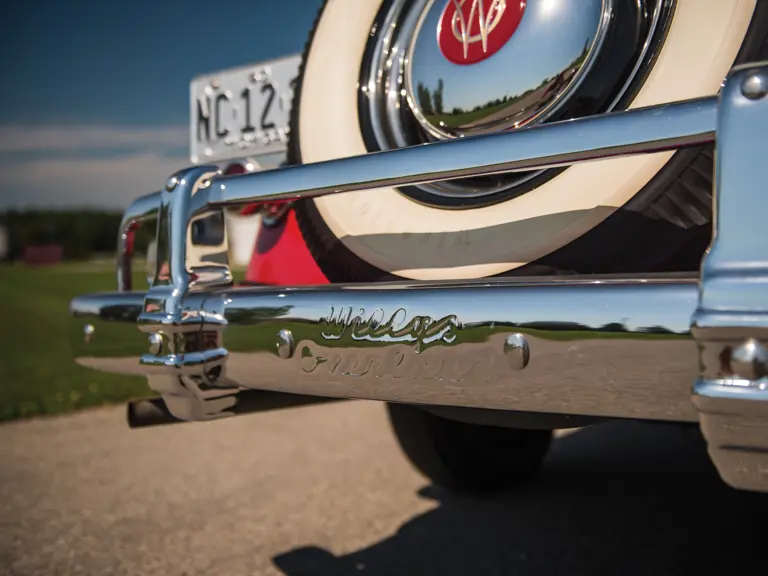
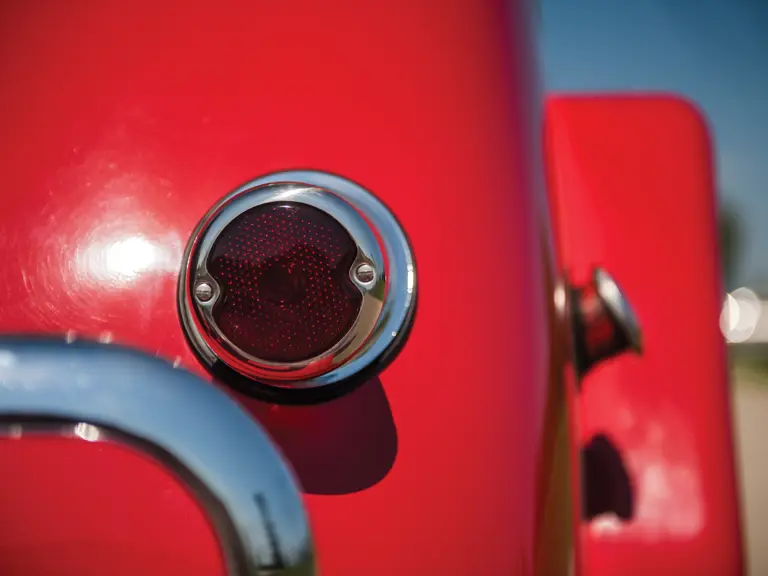

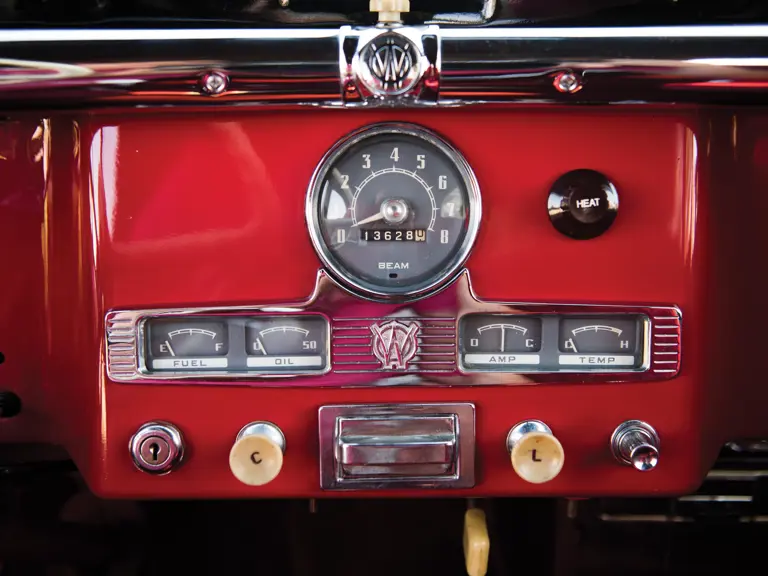
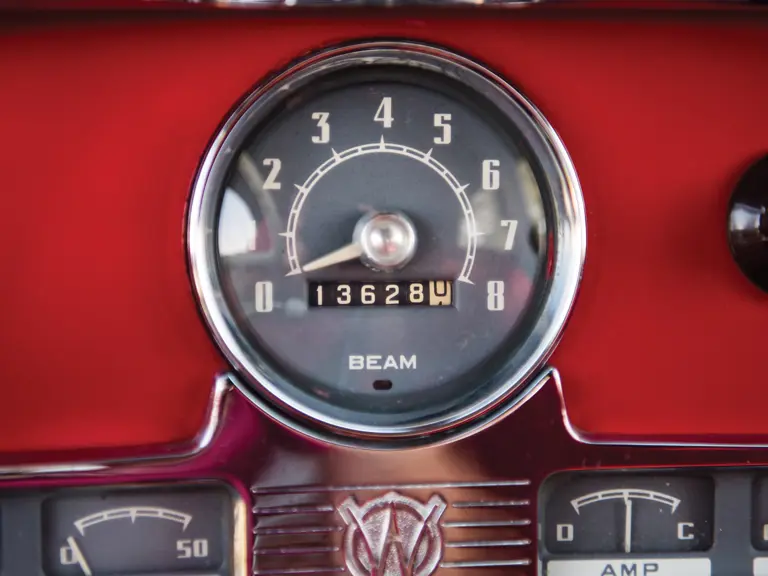

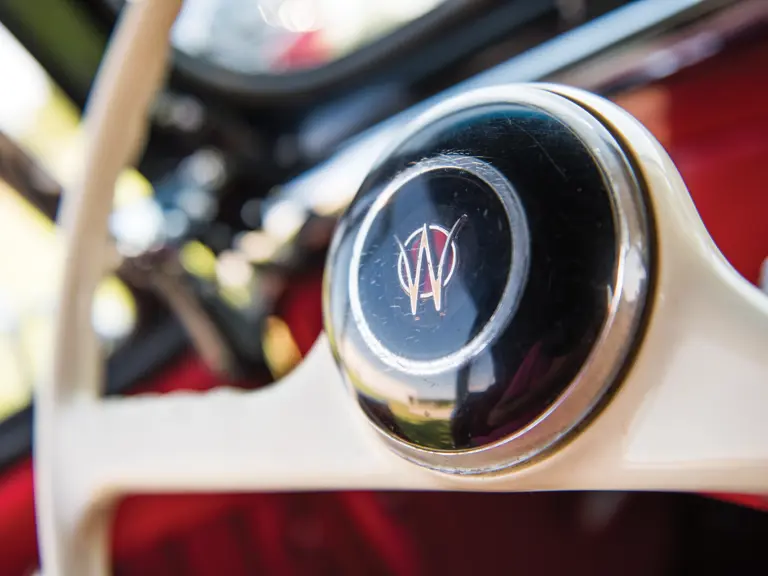
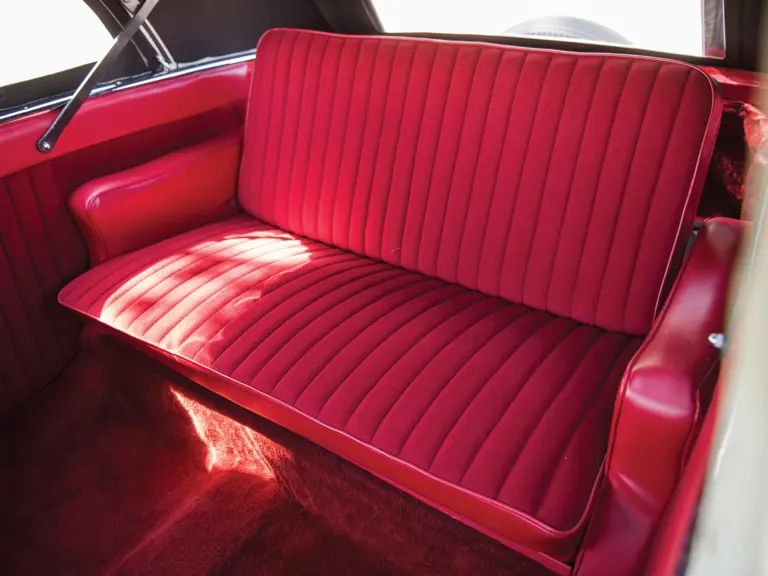
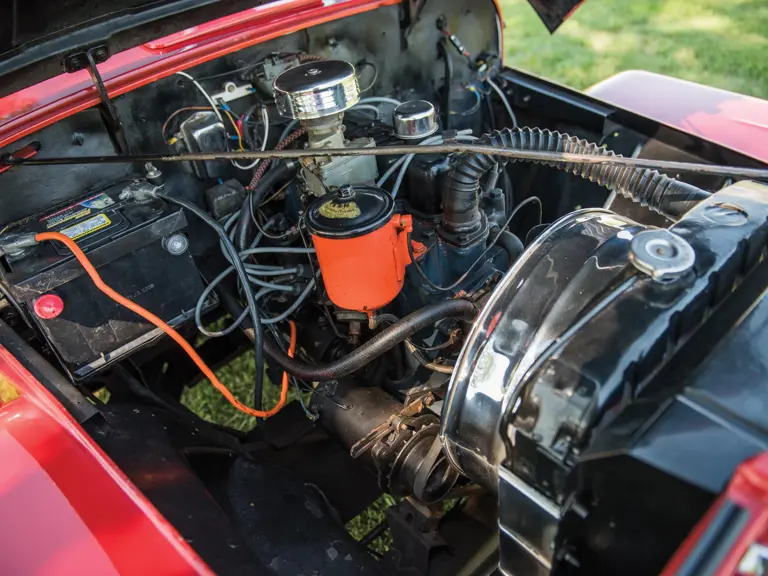
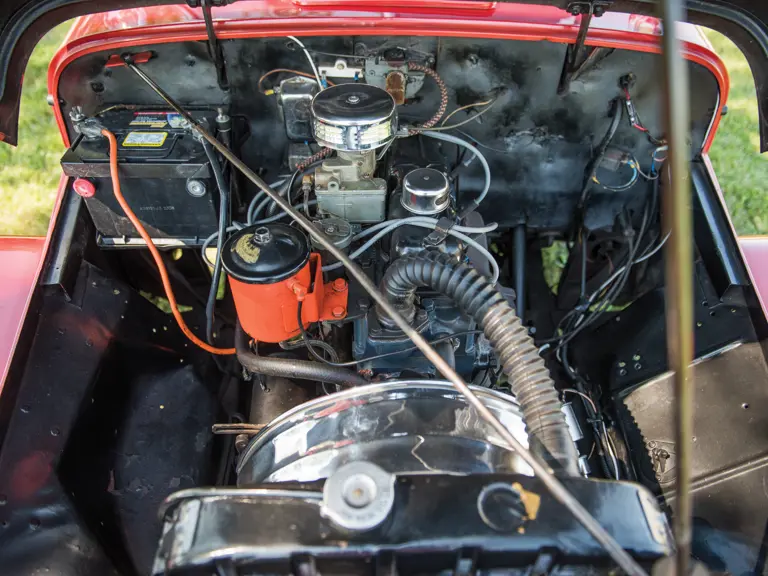
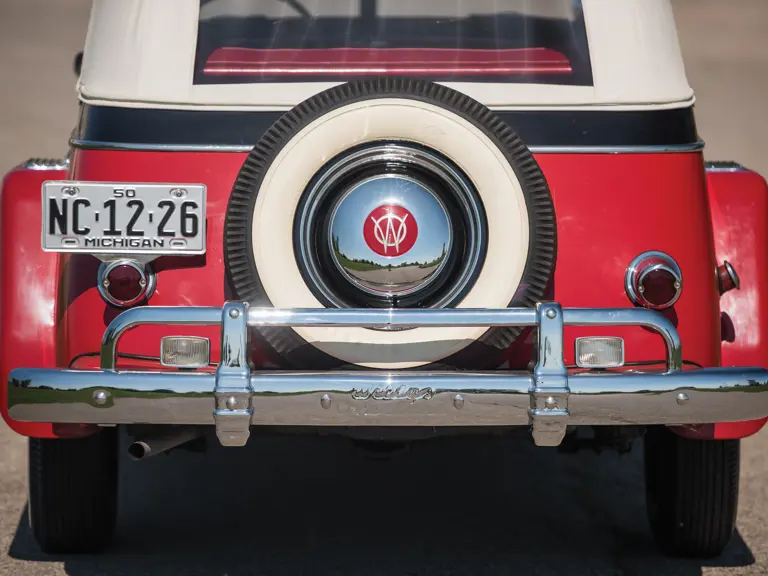

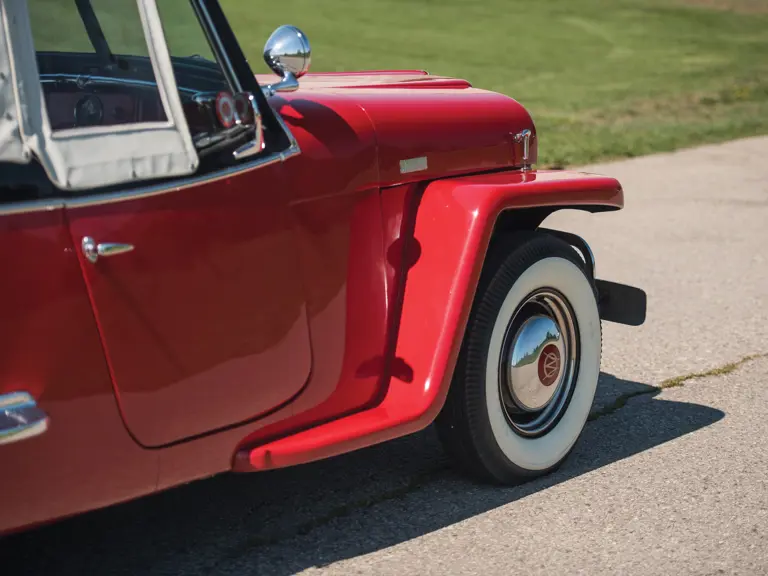
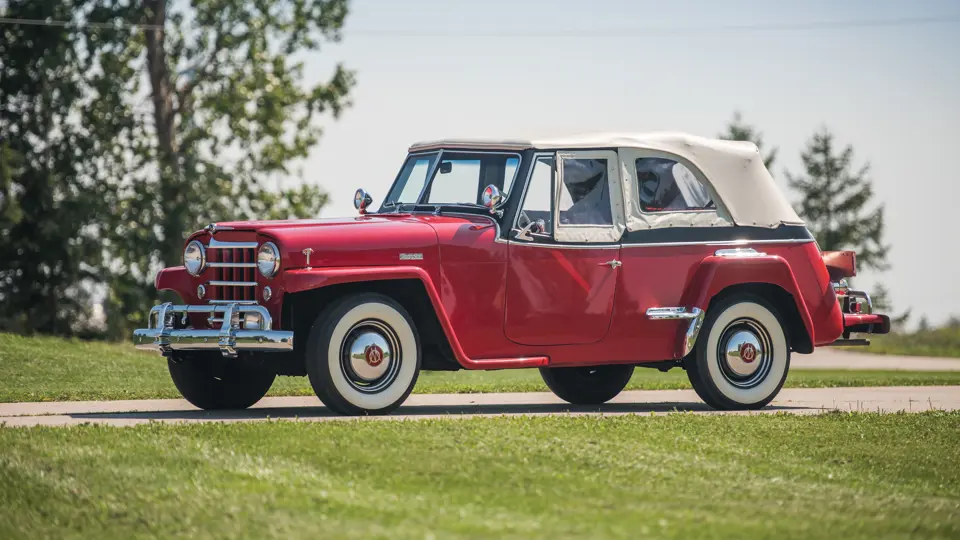
 | Hershey, Pennsylvania
| Hershey, Pennsylvania
